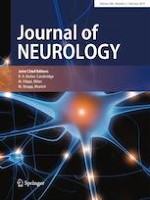Erschienen in:

07.12.2018 | Original Communication
Guillain–Barré syndrome in Denmark: a population-based study on epidemiology, diagnosis and clinical severity
verfasst von:
Helle Al-Hakem, Søren H. Sindrup, Henning Andersen, Charlotte Dornonville de la Cour, Lisbeth L. Lassen, Bianca van den Berg, Bart C. Jacobs, Thomas Harbo
Erschienen in:
Journal of Neurology
|
Ausgabe 2/2019
Einloggen, um Zugang zu erhalten
Abstract
Objectives
To describe the epidemiology and clinical heterogeneity of Guillain–Barré syndrome (GBS) in Denmark and to compare a population-based cohort to prospectively included patients in the International GBS Outcome Study (IGOS).
Methods
The incidence rate (IR) of GBS in Denmark from September 2012 to December 2015, applying the National Institute of Neurological Disorders and Stroke (NINDS) diagnostic criteria, was estimated and the level of diagnostic certainty was described with the Brighton criteria. All cases registered with a diagnosis of GBS or other inflammatory neuropathies in the Danish National Hospital Registry were reviewed for diagnostic criteria and for information on treatment and clinical course.
Results
A total of 299 GBS cases were confirmed, corresponding to a crude IR of 1.59 (95% CI 1.42–1.78) per 100,000 per year. The Brighton criteria level 1–3 of diagnostic certainty was met in 279 (93%) of the patients. Thirty-five percent of the patients were mildly affected (GBS disability score < 3) and a correlation between high age and high disability score at nadir was found (Spearman’s rank correlation coefficient 0.42, p < 0.0001). The group of 89 (30%) patients who were enrolled in IGOS had higher GBS disability score at nadir, were admitted 5 days earlier, reached nadir 4 days faster, and a larger proportion received treatment with IVIg (all p < 0.05).
Conclusion
The epidemiology and full clinical spectrum of GBS are described in a population-based study. This includes a larger proportion of milder cases that are underrepresented in prospective cohorts such as IGOS.